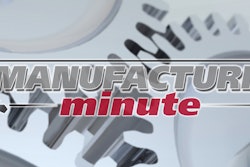From space, America’s rail system looks like a slice of brain tissue, with brightly lit train hubs and spokes standing in for neurons. Bit by bit, it’s starting to behave like one.
Take GE’s newest locomotive, the Tier 4, which is essentially a rolling data center. It carries more than 200 sensors that collect gigabytes of information about engine performance, exhaust, the fuel mix and rail conditions. The locomotive uses software to analyze the data and applies the insights to get smarter and run more efficiently. “The trains still work the same way physically, but we are dramatically enhancing our ability to deliver better outcomes by adding the digital components,” says Seth Bodnar, chief digital officer of GE Transportation and the president of GE Transportation Digital Solutions, a new GE business unit based in Chicago.
Bodnar is quick to point out that the “brilliant” locomotive is just one piece of GE’s vision for the industry’s digital future. The company wants to connect all of its 21,000 locomotives, pulling freight and passengers in 50 countries, to Predix, its cloud-based software platform for the Industrial Internet. “We’re trying to weave a digital thread around the entire railroad operation,” Bodnar says. “The good news is small improvements can have a big impact. A 1 percent fuel efficiency improvement has a $100 million savings benefit for customers. An increase in velocity of just 1 mile per hour can drive over $2 billion in savings to customers.”
Predix is similar to iOS or Android, the software platforms that power smartphones, but built for machines. GE is already using it to optimize and link everything from X-ray machines to jet engines. Predix allows Bodnar’s coders to write railroad applications like GE Trip Optimizer, Yard Planner and Movement Planner, which make trains run faster, fuller, more efficiently and more often. Trip Optimizer is already inside more than 5,000 trains. They have collectively crossed more than 125 million miles on several continents. Bodnar says the app blends GPS data with track profile, rail conditions and other information to generate the most optimal plan for each trip. As the train departs, it can adjust the plan in real time as conditions change. Bodnar says that in just a few years, Trip Optimizer has saved the industry 90 million gallons of diesel fuel.
Yard Planner, on the other hand, is helping customers minimize the time railcars sit idle. Today the car utilization rate hovers between 40 and 60 percent. The app can visualize the yard in an intuitive way, track current inventory as well as inbound and outbound trains, and allow yardmasters to run their wagons more frequently.
Movement Planner already allows a large North American railroad customer put more trains on the same rail and move them faster. GE says the speed increase could be as much as 10 percent across a rail network. That’s because the app, like a skilled chess player, can look many moves ahead, analyze train and crew schedules, network congestion, weather and other factors and find the most optimal combination. “By next year, Movement Planner will handle over one-third of rail traffic in the United States,” Bodnar says.
GE Transportation is now extending its software to rail shippers who fill cars with freight. Cloud-based programs like ShipperConnect, Transportation Management Platform and RailConnect TMS give small- and medium-sized railroads critical “first-mile, last-mile” connectivity for their cargo, automate all aspects of train and switching operations, and handle smooth interchange of rail traffic.
Bodnar says that RailConnect already has more than 400 customers, who use it to track 8 million carloads annually. GE made the first locomotive more than a century ago, and Bodnar says the new software builds on this deep domain expertise. “A decade from now, these digital tools will take railroad productivity and efficiency to unprecedented levels,” he says. “The whole network will light up like a brain.”






















